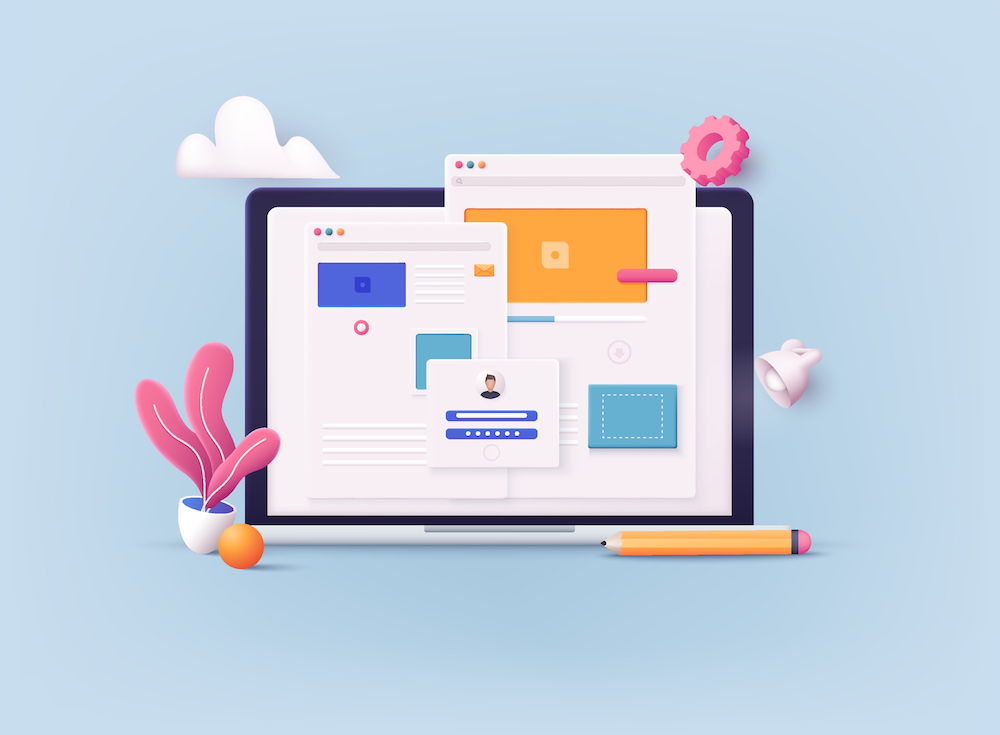Table of Contents
WordPress: a name that has become almost synonymous with website creation. This powerful content management system (CMS), powering over 40% of the web, stands out for its user-friendly interface, flexibility, and a vast array of customizable options. In the digital era, where online presence is crucial, WordPress emerges as a reliable tool for building anything from simple blogs to complex e-commerce sites. Whether you’re a small business owner, a startup brand, or a blogger, having a website is no longer just an option; it’s a vital part of your digital identity and a significant factor in your success.
1. Planning Your Website
Defining the Purpose
The foundation of a successful website is understanding its core goal. Is it to sell products, provide services, share knowledge, or showcase a portfolio? This clarity in purpose not only guides your design and development process but also helps in creating targeted content that resonates with your audience.
Target Audience Analysis
Knowing your audience is key to creating a website that appeals to them. Are they young tech enthusiasts, busy professionals, or hobbyists? This understanding influences not just the content but also the design, functionality, and overall user experience of your site.
2. Setting Up the Basics
Domain Name Selection
Choosing the right domain name is crucial as it forms the first impression. It should be memorable, easy to type, and reflective of your brand or content. Think of it as your digital identity that people will remember and search for.
Choosing a Hosting Provider
Selecting a hosting provider is like choosing a home for your website. Look for reliability, speed, customer service, and scalability. A good host ensures your website is accessible, fast, and secure. We love WPEngine for its customer support and high uptime.
3. Installing WordPress
Step-by-Step Guide
Installing WordPress can seem daunting, but it’s quite straightforward. Begin by downloading WordPress, uploading it to your hosting account, creating a database, and following the installation script. This process sets the foundation for your website.
Setting Up a Database
A database is where all your site’s data, including posts, pages, and settings, are stored. Creating one is usually a simple process, involving naming the database and assigning a user with specific privileges.
Navigating the Dashboard
The WordPress Dashboard is your control panel, where you manage content, appearance, and functionality. Spend time familiarizing yourself with its features, as it will be the central hub for all your site management activities.

4. Selecting a Theme
Importance of a Good Theme
The right theme not only gives your site its aesthetic appeal but also plays a crucial role in its functionality. Choose a theme that aligns with your site’s purpose and offers the flexibility you need. We prefer to build custom themes that meet your exact requirements, but there are good off-the-shelf themes. Be sure to consider the overall file size and choose a theme that is lightweight.
Free vs Premium Themes
Free themes are a good start for those on a budget, but premium themes often offer more advanced features, dedicated support, and regular updates, which are essential for a dynamic and evolving website.
Installing and Customizing a Theme
Installing a theme is just the beginning. Customize it to fit your brand’s identity, from colors and fonts to layout and functionality. This personalization makes your site stand out and reflect your unique style.
5. Plugins and Customization
Essential WordPress Plugins
Plugins are the building blocks of your WordPress site’s functionality. Essential plugins include ones for SEO, security, performance optimization, and social media integration. They add features and improve your site’s performance.
Customizing with Plugins
Plugins allow for extensive customization without needing to code. Whether you need a contact form, an SEO tool, or a fancy slider, there’s likely a plugin for that. But remember, less is more; too many plugins can slow down your site.
Plugin Management Tips
Keep your plugins updated and delete those you don’t use. Regular updates ensure security and functionality while removing unused plugins helps maintain a clean and efficient website environment.
6. Creating Content
Adding and Editing Posts and Pages
WordPress makes adding and editing content simple. Posts are typically used for blog entries and dynamic content, while pages are for static content like ‘About Us’ or ‘Contact’. Both offer different options for organizing and presenting your content.
Using the WordPress Editor
The WordPress editor is a powerful tool that allows you to easily add and format your content. It supports various media types and provides options for layout and design, making your content engaging and versatile.
Best Practices for Content Creation
Quality content is key to engaging your audience. Write clear, concise, and engaging copy. Use multimedia to enhance your message, and organize your content for easy navigation. Consistency and quality are crucial for building and maintaining an audience.

7. Managing Media
Uploading and Managing Images and Videos
WordPress’s Media Library is a centralized place to manage all your images, videos, and other media files. It’s important to keep this area organized and ensure all media is optimized for the web.
Image Optimization
Optimizing images is crucial for website performance. Large image files can slow down your site, negatively impacting user experience and SEO. Use tools to compress and optimize images without losing quality.
8. SEO and Marketing
Basics of WordPress SEO
SEO (Search Engine Optimization) is vital for getting your website noticed. Use keywords effectively, optimize your meta descriptions, and ensure your content is high-quality and relevant. For more advise on how to optimize your website, check out the Go Fish Digital blog, or sign up for our newsletter.
Plugins for SEO
SEO plugins like Yoast SEO guide you through optimizing each page and post. They help in adding meta tags, creating sitemaps, and offering suggestions to improve your site’s SEO.
Social Media Integration
Integrating your website with social media platforms can significantly enhance its reach and engagement. Use plugins to add social sharing buttons and connect your site with your social media profiles.
9. Security and Maintenance
Keeping WordPress Secure
WordPress’s popularity makes it a target for hackers. Keep your site secure with strong passwords, security plugins, and regular monitoring of your site’s health.
Regular Updates and Backups
Regularly updating WordPress, themes, and plugins is crucial for security and functionality. Also, implement a backup solution to protect your data in case of any mishaps.
Dealing with Common Issues
Be prepared to handle common website issues like broken links, or update errors. Knowing how to troubleshoot these problems will save you time and stress. The good news is that if you encounter an issue, there are a ton of helpful resources online related to WordPress.
10. Advanced Customizations
Introduction to WordPress Coding
For those who wish to dive deeper into customization, learning basic HTML, CSS, and PHP can open up a world of possibilities. This knowledge allows for fine-tuning and creating custom functionalities.
Custom CSS and Child Themes
Use custom CSS and child themes to make advanced visual changes without affecting the original theme. This approach ensures that your customizations are preserved during theme updates.
Using Page Builders
Page builders like Elementor offer intuitive drag-and-drop interfaces for creating custom layouts and designs. They are a good option for those who want to design unique pages without delving into code. Like any page builder, they can add bloat to the overall website, and we’d recommend avoiding them when possible.
11. Analytics and Improvement
Setting up Google Analytics
Google Analytics provides insights into your website’s traffic and user behavior. It’s a powerful tool for understanding how visitors interact with your site, which can inform your content and marketing strategies.
Interpreting Visitor Data
Analyzing visitor data helps in making informed decisions about content, design, and functionality. It allows you to see what’s working and what needs improvement, guiding your website’s evolution.
Continuous Improvement
Website creation is not a one-time task but an ongoing process. Continuously updating content, improving design, and staying abreast of the latest web trends are crucial for maintaining a relevant and successful website.
12. Conclusion
In this guide, we’ve scratched the surface of the essential steps in building a WordPress website, from planning to maintenance. Remember, the journey doesn’t end with the launch of your site; it’s an ongoing process of learning, growing, and adapting. And, if you need more guidance or want to hand the process over to a team of experts, Go Fish Digital can handle your website design and development needs.
Search News Straight To Your Inbox
*Required
Join thousands of marketers to get the best search news in under 5 minutes. Get resources, tips and more with The Splash newsletter: